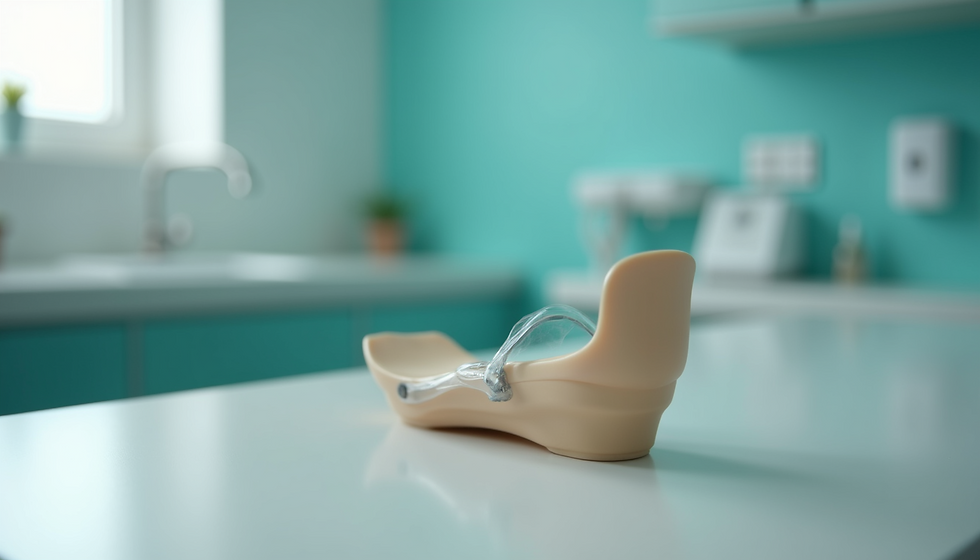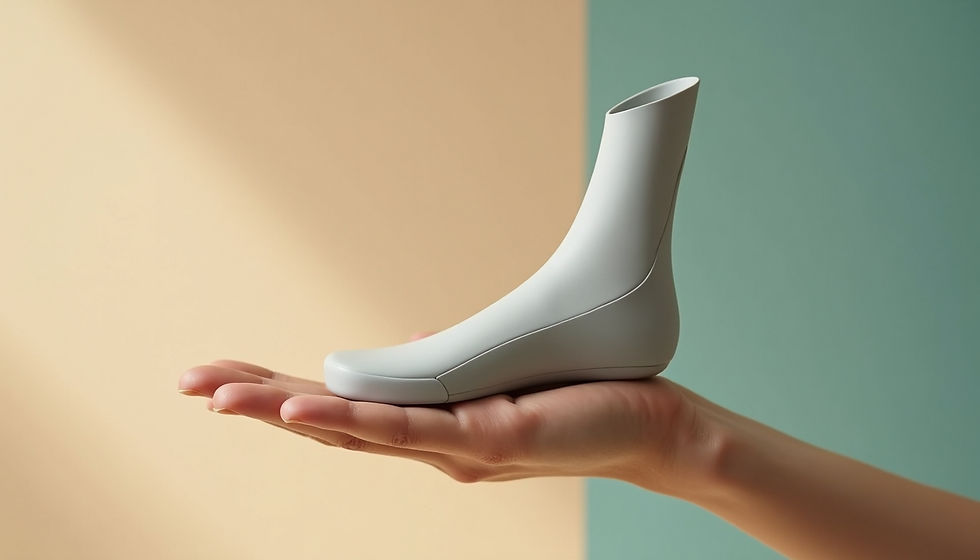Understanding Orthotic Types and Benefits
- Elliot Davis
- Apr 28
- 2 min read
Orthotics play a crucial role in supporting and correcting various foot and ankle conditions. Understanding the different types of orthotics available can help individuals make informed decisions about their orthotic needs. In this post, we will delve into the various orthotic types and their benefits to shed light on how they can improve overall foot health and function.

Rigid Orthotics: Rigid orthotics are typically made from firm materials such as carbon fiber or plastic. They are designed to control foot motion and provide stability for individuals with foot deformities or conditions like plantar fasciitis. Rigid orthotics are ideal for individuals who require maximum support and control.
Soft Orthotics: Soft orthotics are crafted from cushioning materials like foam or gel to provide additional shock absorption and cushioning. These orthotics are beneficial for individuals with diabetic foot ulcers, arthritis, or those seeking extra comfort in their shoes. Soft orthotics help distribute pressure evenly throughout the foot, reducing discomfort and preventing injuries.
Semi-Rigid Orthotics: Semi-rigid orthotics offer a balance between support and cushioning. They are often prescribed for athletes or individuals with overpronation or flat feet. Semi-rigid orthotics help stabilize the foot while allowing for some degree of flexibility during movement.
Custom Orthotics: Custom orthotics are uniquely tailored to the individual's foot shape and biomechanics. They are crafted based on a thorough assessment of the individual's gait and foot structure. Custom orthotics provide precise support, correction, and comfort, making them highly effective in addressing specific foot issues. Now, let's explore the benefits of wearing orthotics:
Pain Relief: Orthotics can alleviate pain and discomfort caused by various foot conditions such as plantar fasciitis, bunions, or Achilles tendonitis. They help correct misalignments in the feet and ankles, reducing strain on the muscles and joints.
Improved Foot Function: By supporting the arches, cushioning the heels, and realigning the feet, orthotics can improve overall foot function. They help distribute pressure evenly, enhance stability, and promote efficient movement patterns.
Injury Prevention: Orthotics can help prevent injuries by providing adequate support and cushioning during physical activities. They enhance shock absorption, reduce impact on the feet, and minimize the risk of overuse injuries. In conclusion, understanding the different types of orthotics and their benefits is crucial for individuals seeking to improve their foot health and overall well-being. Whether you require maximum support, extra cushioning, or a custom-fit solution, orthotics can play a significant role in enhancing your comfort and mobility. Consult with a healthcare professional to determine the most suitable orthotic type for your specific needs and experience the positive impact it can have on your daily life.


Comments